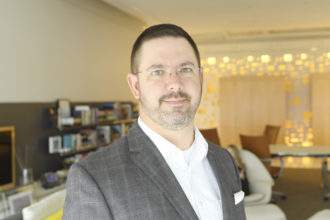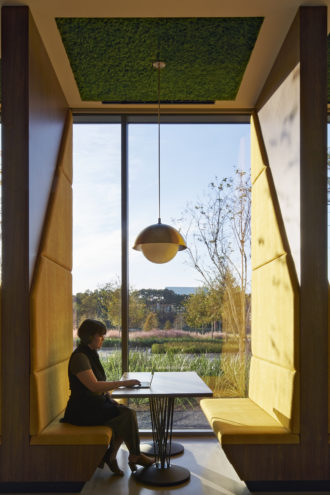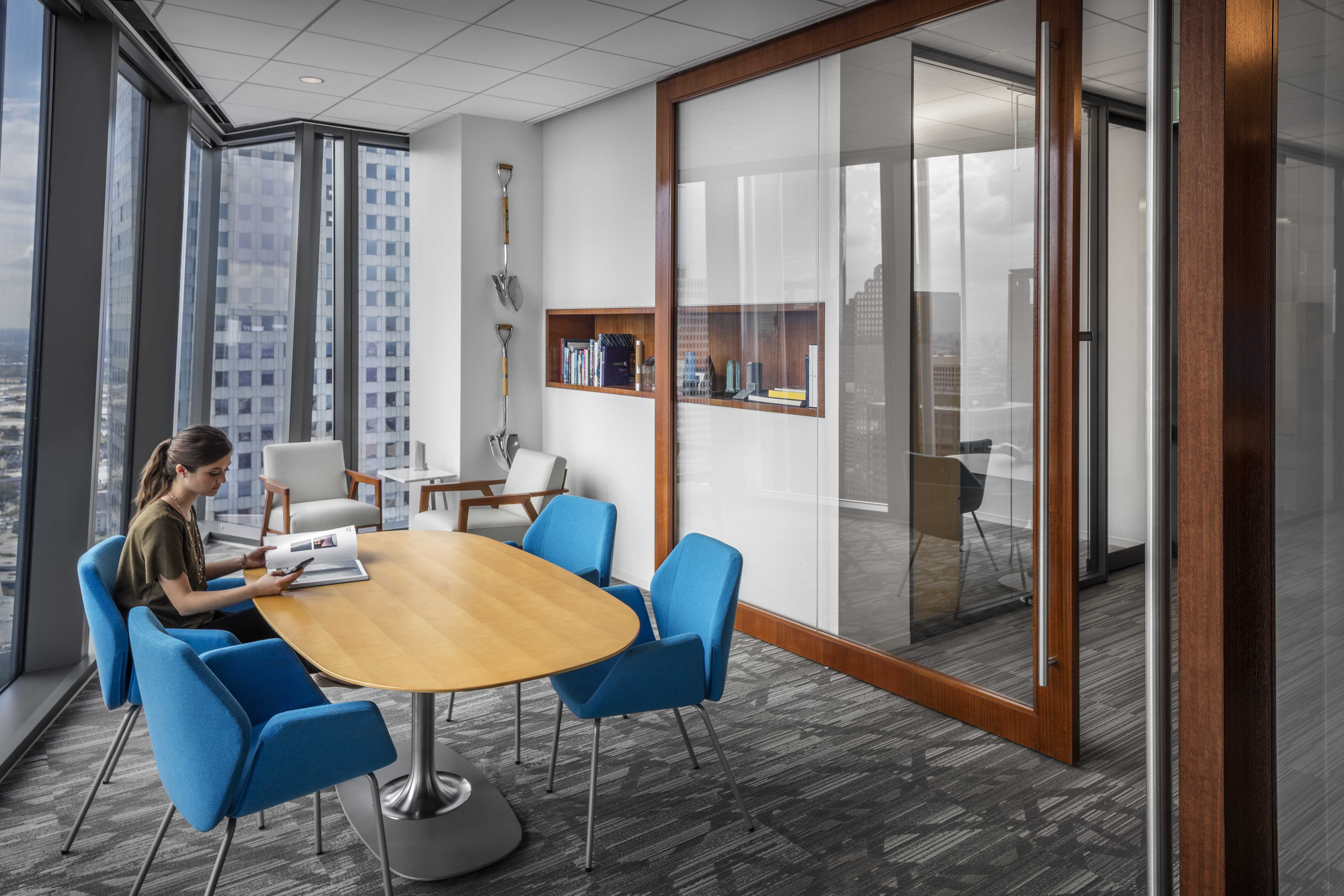The past few weeks have been tough. Mentally tough. Working from home is new and, yes, there are physical challenges to being productive in a new space, but the psychological challenges cannot be underestimated.
If the experience of sharing your workspace with your spouse, kids, pets, roommates, extended family, etc., isn’t weighing heavy on your mind, consider the alternative: Many are spending their quarantine in virtual isolation because they do not have anyone with whom to interact.
Fortunately, it appears that social distancing and stay-at-home orders are having a positive impact and are helping to flatten the curve. Political and business leaders are considering how and when to return to work and the shape our new normal will take. To return to our physical workplace, more than just the design of the physical space must be considered for a psychologically successful and safe return to work.

Putting Your People First
Soon, we will all go back to our physical workplace. Job losses, fluid family dynamics, and of course, the potential reappearance of the virus, will all contribute to new levels of stress. As we phase back to work, put employees at ease by making health, safety, and needs a priority.
Putting your people first will require the engagement of your leadership–facilities management, real estate, HR, and the C-suite–and can ensure carefully considered goals are communicated to users and implemented thoughtfully, over time.
Plan a phased return to work, allowing employees who do not need to physically be in the office, to opt-out and continue working remotely for a while. Consider establishing a 4-6-hour core work period. This will allow for more flexibility in work schedules while keeping a structured time for teams to work together. Leaders need to ensure psychological safety by openly supporting the need to shift hours and care for families. If you didn’t allow remote working in the past, consider revising those policies to allow for more flexibility.
Finally, leadership must keep an open line of communication to the staff, making them aware of your new policies and plans weekly through various mediums (email, video messages, newsletters, virtual town halls). Support and communication at a group and personal level cannot be overestimated. Your staff needs to know they have permission to work in a modified way, and this will ultimately allow them to reenter the workplace in a less stressful, more productive manner.
Creating New Processes

Imagine returning to your workplace for the first time, post-quarantine: How will that process be facilitated? Daily health checks with a series of questions to answer? Your temperature recorded by your landlord or a colleague? Physical distancing will certainly be in effect.
Most of our clients are already considering a phased, partial occupancy using shifts with 50 percent or fewer seats occupied. And new processes can add up to a very stressful day–a formerly familiar place will have an unsettling feeling for some.
We are working with clients to evaluate their processes post-pandemic and what the “new normal” will look like—a workplace designed specifically to solve business and performance challenges that each company will face. As business owners, we need to understand how our return-to-work experience affects the psychological well-being of our colleagues. To combat these stressors, communicating expectations to colleagues before, during, and after the return to the office, must be clear and reassuring.
Carefully consider the language, format, colors, and frequency of these communications. Signs and visual cues can reinforce new habits in the workplace, but they must be positive messages that encourage health and wellness. Pre-/post-occupancy surveys are another great way to understand what employees require on day one and over subsequent months. Graphic designers and change management professionals can improve your communication process, help create a positive effect, and lead to broader adoption of new norms and protocols.
A New Focus on Places
As interior architects, we spend careers studying the experience workers encounter in the workplaces. It’s important to help clients think beyond the first day of business in their new space and, in this case, helping them think beyond day one back in the office, post-pandemic. Reentering the workplace will increase confidence, reduce stress, and reintroduce us to our coworkers we haven’t seen in weeks. Physical distancing will be a big part of our new normal.
Workplace settings must be analyzed and reoccupied with physical distancing standards in place. Individual, collaborative, and amenity spaces, must all be managed differently; limiting physical contact where possible, and subject to frequent cleaning was not possible. Shared spaces should integrate fresh air, biophilic elements, and sunlight—proven anti-viral, anti-bacterial, and anti-microbial characteristics that support physical and psychological health. And although the financial impact of re-planning a workplace may be substantial, I recommend a measured approach evaluated over time to determine what physical changes are truly required and what can be addressed through changed processes or behaviors.
This will not be the death of the open-plan workplace, or activity-based working, as many have reported. Shared workstations, cleaned with anti-viral wipes before and after each use, may be the cleanest place in any office! Properly designed open workspaces, combined with well-communicated and enforced usage protocols, will eliminate “social distancing” and allow re-engagement with your friends and colleagues from a safe physical distance.
Integrating people, processes, and places is the future of effective workplace strategy, and this will be our new normal. Changing the design of the workplace, without communicating the new processes to your people, will only end in confusion and frustration. Executed well, returning to the workplace can have a positive impact on your colleagues’ psyche and well-being.
Marc Bellamy, a partner and principal with PDR, leads the firm’s Dallas office.





